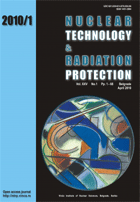
VERTICAL DISTRIBUTION OF 137Cs IN CULTIVATED AND UNDISTURBED AREAS
Pages: 30-36
Authors: Snežana S. Nenadović, Miloš T. Nenadović, Ivana S. Vukanac, Aleksandar R. Djordjević, Slavoljub S. Dragićević, Milutin A. Lješević
Abstract
This paper introduces the distribution background and unique characteristics of 137Cs in cultivated and undisturbed areas. The samples were taken from three measuring points of the depth of 1 m. We examined all visible horizons and determined their classifications. There were four horizons in one profile. All four horizons had a different zone thickness. 137Cs is an artificial radionuclide that has been produced primarily as a result of atmospheric thermonuclear weapon tests since the 1950. Also, the great amount of 137Cs (~85 PBq) was released in the atmosphere during the Chernobyl accident. So, 137Cs has been globally distributed, with fallout rates generally related to latitude and precipitation depth. The movement of 137Cs in soil is primarily controlled by soil erosion processes, such as processes caused by water, wind, and tillage. Thus, 137Cs is a valuable tracer to study soil erosion. The specific activity of 137Cs in soil and sediment samples was determined by using the gamma-spectrometric method.
Key words: 137Cs, erosion, soil, gamma-spectrometric method
FULL PAPER IN PDF FORMAT (422 KB)
Last updated on September, 2010
